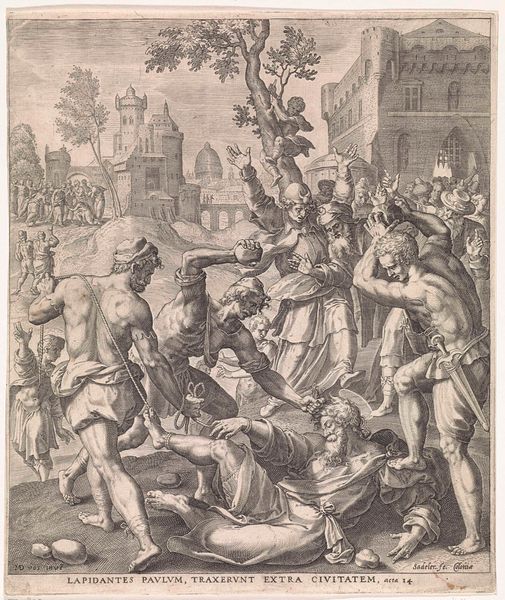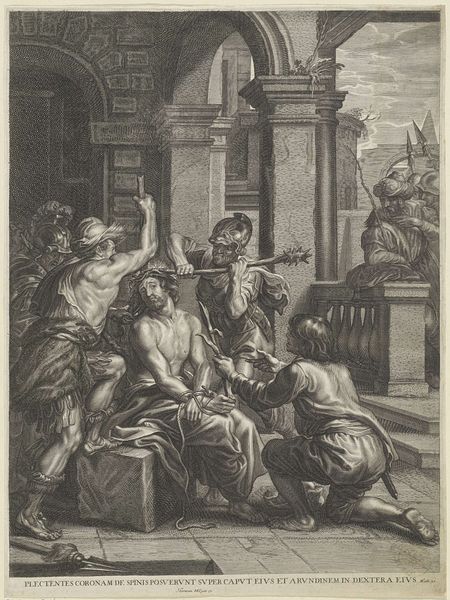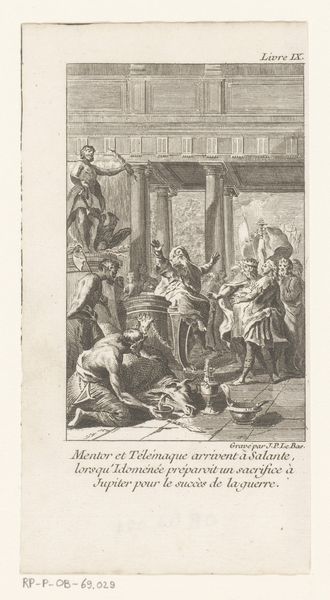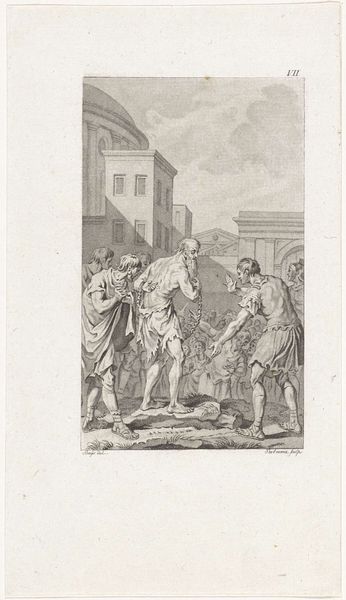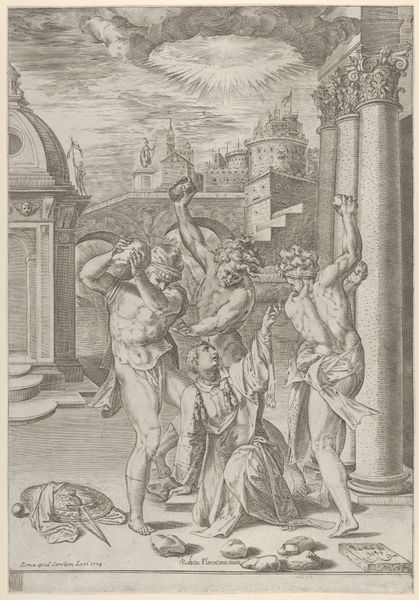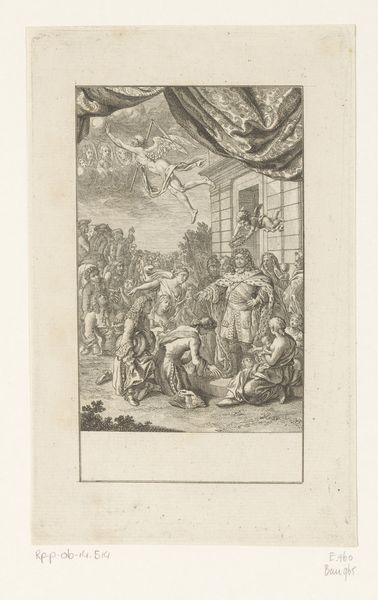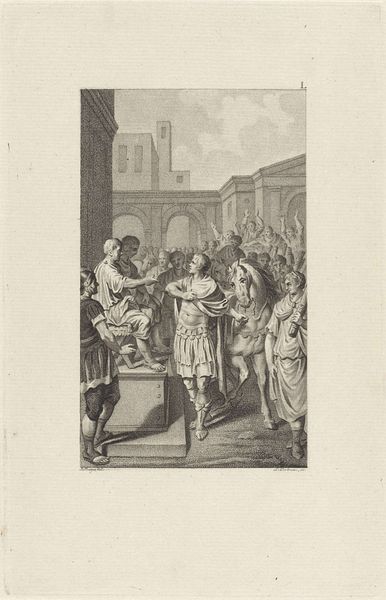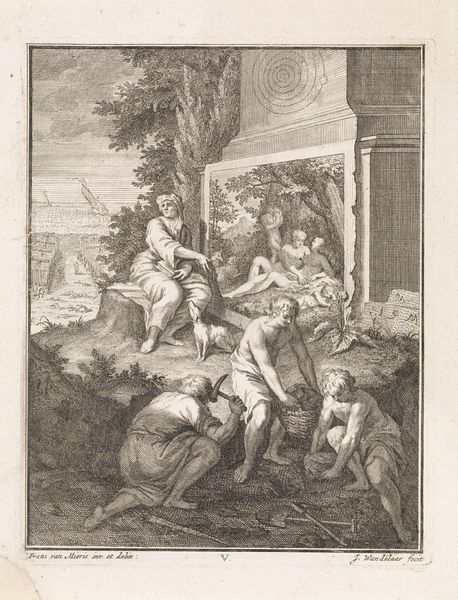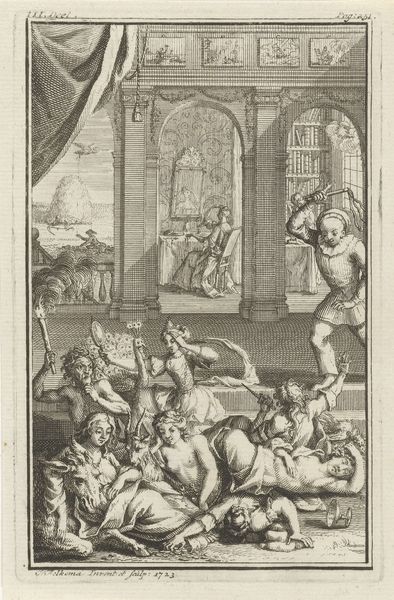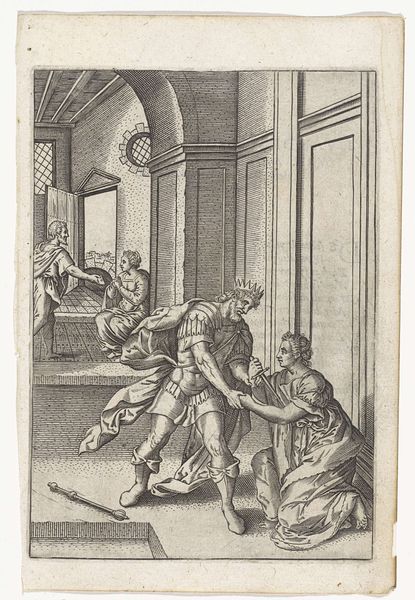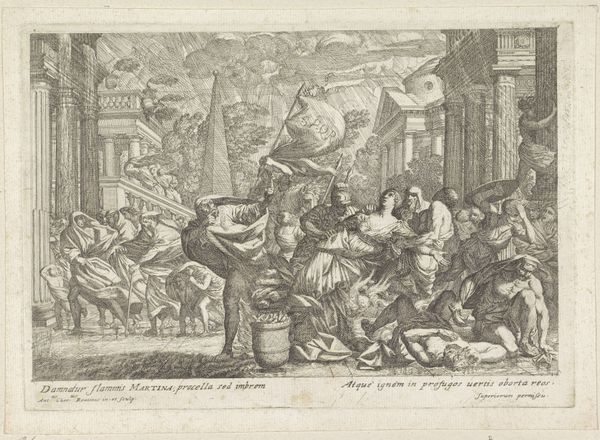
print, engraving
#
baroque
# print
#
figuration
#
line
#
history-painting
#
engraving
Dimensions: height 190 mm, width 140 mm
Copyright: Rijks Museum: Open Domain
Curator: Before us is "Kindermoord te Bethlehem," or "Massacre of the Innocents," an engraving by Arnold Houbraken, made sometime between 1681 and 1699. It's currently held in the Rijksmuseum collection. Editor: My immediate reaction is of chaotic brutality rendered in stark, unforgiving lines. The frenzy seems barely contained by the relatively small scale of the print. It feels...immediate. Curator: The immediacy is partly due to the directness of the engraving technique. Houbraken favored clean lines to build form, prioritizing clarity for dissemination, prints being relatively affordable commodities. How might its wide availability impacted audiences at the time? Editor: It certainly made the horrific biblical narrative accessible. Think about the potent symbolism of infanticide present in folklore and mythology worldwide –the motif appears in various contexts to convey societal anxieties or upheaval. This image seizes upon primal fears. Curator: Exactly! And considering the period, remember the political and religious turbulence impacting the Dutch Republic. Mass violence was, tragically, commonplace. The commercial success of similar prints hints at how art both reflects and shapes its culture. How are similar tragic events portrayed in later eras, and in other media? Editor: What strikes me, also, is how the architectural elements contrast so starkly with the scene of violence; the backdrop lends a stage-like, even theatrical quality to the horror. This contrast would not have been overlooked, it is meant to signify that corruption exists even in what appear to be orderly structures. Curator: Precisely, it raises a lot of critical questions. Looking closely at Houbraken's approach – from the paper quality, likely a relatively inexpensive stock, to the rapid, efficient mark-making indicative of printmaking for profit. This changes the dynamic to one about labor. How are depictions of such tragedy often products of other injustices and oppressions? Editor: Considering that backdrop, I also see a visual link drawn to Roman antiquity, signified through the bust atop the pillar. The figures in the scene are dressed in tunics of the period as well, visually situating this depiction with imperial power and alluding to the possibility of future, similar cruelty. Curator: Your perspective gives us much to think about! Editor: Yes, the cultural symbols that Houbraken employs adds a valuable dimension. Thank you!
Comments
No comments
Be the first to comment and join the conversation on the ultimate creative platform.
